

Zucchini is an easy plant to grow that will delight your taste buds from summer to fall.
Zucchini important facts
Name – Cucurbita pepo
Family – Cucurbitaceae
Type – vegetable
Height – 12 to 16 inches (30 to 40 cm)
Exposure – full sun
Soil – rather light but especially well drained
Harvest – 2 months after sowing
Zucchini is a fruit / vegetable that grows in all our climate zones and only requires two things: sun and water.
Growing zucchini can be started either from seeds from spring to summer, either from young plants purchased in nurseries at the beginning of spring.
Zucchini is one of the easiest seeds to sow and is perfect for beginner gardeners.
Sowing indoors starts in March or April.
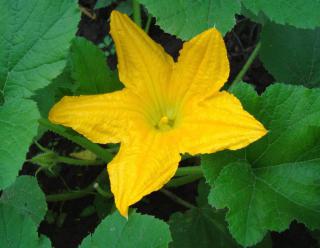 Sow seeds in seed holes using small nursery pots, with 2 to 3 seeds per pot.
Sow seeds in seed holes using small nursery pots, with 2 to 3 seeds per pot.Direct sowing in the ground can start end of April to beginning of May, once all risk of freezing is past.
To sow zucchini directly in the ground, be sure to wait for the last day that freezing can occur for your region before sowing.
A special tip: Zucchini must cross-pollinate between male and female flowers to bear fruits. It helps to have several plants for fruits to develop well and to increase the harvest. Each plant usually bears both male and female flowers.
If your time is short and you forget to sow in the spring, it is possible to plant zucchini from seedlings purchased in nursery pots at the end of spring or the beginning of summer.
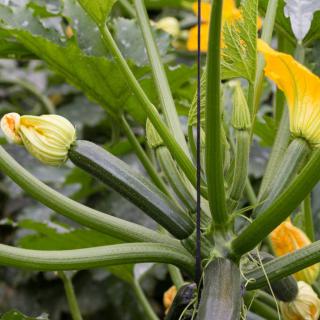 If growing zucchini is very easy, there are nonetheless a few things to watch out for to ensure an abundant harvest.
If growing zucchini is very easy, there are nonetheless a few things to watch out for to ensure an abundant harvest.
Caring for zucchinis from planting to harvest means following several practices that will help you produce beautiful fruits.
These practices will help develop the taste of your zucchinis as well as keep diseases at bay.
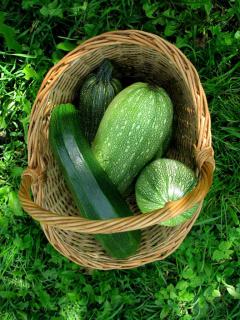 Zucchini fruit grows fast, and you must monitor its growth: if the fruit gets too big, it won’t taste as good as normal-sized fruits.
Zucchini fruit grows fast, and you must monitor its growth: if the fruit gets too big, it won’t taste as good as normal-sized fruits.
Soft flesh guarantees a savory taste and easy digestibility.
The larger the fruit, the larger and more numerous the seeds inside become.
This thin white velvety layer that covers zucchini leaves like white powder and poisons the plant is called powdery mildew.
This disease is a fungus that sucks the sap from the plant, draining the plant and weakening it sometimes to the point of death.
Treating the plant adequately in a timely manner is needed to get rid of powdery mildew, since it can even spread to most of the gourd family plants that you might have in your vegetable garden, like squash and pumpkin, cucumber or melon.
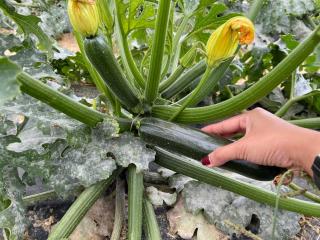 Use pruning shears, but disinfect them beforehand with 90 proof alcohol.
Use pruning shears, but disinfect them beforehand with 90 proof alcohol.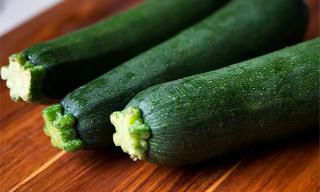 Originally domesticated in Central America, zucchini is actually a young squash harvested before having matured completely. It’s a key ratatouille ingredient.
Originally domesticated in Central America, zucchini is actually a young squash harvested before having matured completely. It’s a key ratatouille ingredient.
It also offers during the summer beautiful edible yellow flowers.
Considered a vine, this plant’s long or round fruits have a high water (95%), calcium, magnesium and potassium content.
They also have high mineral, vitamin, fiber and trace elements.
The many different varieties produce fruits of many different colors, sizes, and tastes that can bring touches of green, white or yellow in shapes both round and long to your vegetable patch.
Among the most interesting zucchini varieties, make sure to try the ‘Ambassador’, ‘Black beauty’, ‘Diamond’, ‘Gold rush’, ‘Grey Zucchini’, ‘Splendor’, or ‘Ronde de Nice’ with its delicious round fruits.
Avoid wetting the leaves when watering, it’s the best way to avoid powdery mildew.